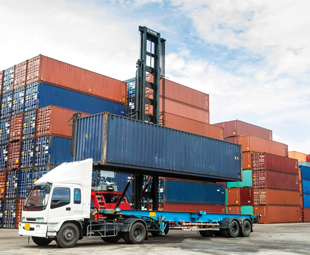Having to contain frustration

As the shift to high-cube (HC) containers continues, South Africa will be left behind by the end of 2018 if its legislation is not adapted
In road haulage there is continual innovation in vehicle and trailer design and capacities. Vehicle dimensions and specifications have changed radically to match demand.
The introduction of containerisation in the 1970s made it essential to increase legal vehicle height from 4,1 to 4,3 m. With the advent of the HC container, the “new norm” is for 12-m boxes in world shipping – and they require a legal height of 4,6 m (the same as a double-deck bus).
Based on current volumes, there will be approximately 900 000 to 1 000 000 HC box movements on South African roads in 2017. The proportion will continue to increase, driven by international trade.
Road transport of HC containers is currently illegal on South African roads, but is permitted until January 2019 under a prosecution “moratorium” issued by the Department of Transport.
The Road Freight Strategy, endorsed by Cabinet in 2017, recommends engagement with the South African Development Community (SADC) Tripartite Transport and Transit Facilitation Programme (TTTFP) to facilitate harmonisation of vehicle regulations to improve trade on regional corridors.
Zambia, Zimbabwe and Tanzania have already changed their legal height limits, and barring vehicles from neighbouring states will contravene the SADC Protocol on Transport and be recorded as a Non-Tariff Barrier (NTB).
Repeated submissions to the authorities have not resulted in further response or dialogue, which means that transporting HC containers by road may become illegal after 2018. This makes several sectors vulnerable and provides a very short window for them to revise their logistics systems.
The current impasse in changing road-freight regulations to permit legal transport of HC containers is part of the outdated legislation responsible for much of the unenforceable regulation hanging over road-freight transport in the region.
After ten years of safe transport of HCs all over the region, there is no credible evidence to support the resistance to changing the legal height of transport vehicles. The insurers, shipping lines (as owners) and road authorities have no records of damage caused by the dimensions of HC containers.
It is likely that the casual disregard for the practical and economic impacts on the industry will result in a total crisis when the moratorium is lifted and a large proportion of the road-freight industry opts to not transport HC containers.
The resulting chaos in ocean shipping and in South African ports, as well as the disruptions to industry, will cause added damage to the fragile regional economic situation.
The deputy minister of transport recently made a statement that “regulation” (which is to say, restriction or additional cost) of cross-border transport is a propeller (not an obstacle) to regional trade.
Fesarta will continue to request that the “inconsistent and flippant regulatory practices” where “authorities change rules without due process and consultation”, which she also mentioned, can be resolved to end the looming crisis with container transport.
Mike Fitzmaurice is the CEO of the Federation of East and Southern Africa Road Transport Associations (Fesarta). He has 42 years of experience in the transport and logistics industry with several major companies in South Africa, as well as overseas exposure with some of the leading transport companies in six European countries. Since 2004 he has established and run Transport Logistics Consultants. In May 2015 he became CEO of Fesarta.
Published by
Focus on Transport
focusmagsa




